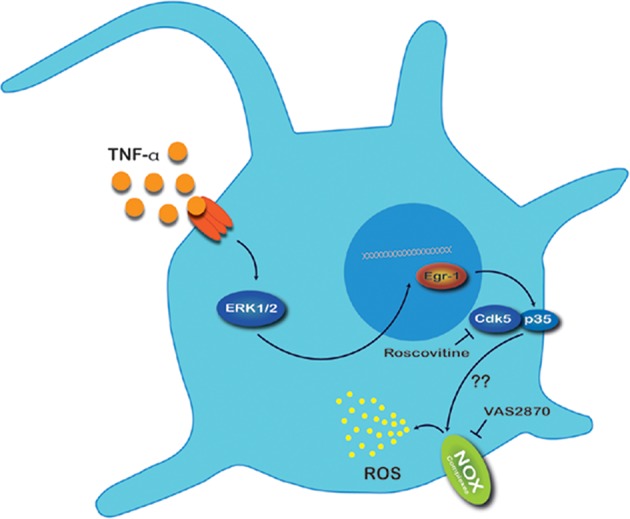Figure 7.

Proposed mechanism for ROS production in nociceptive neurons exposed to TNF-α. Under an inflammatory state, primary sensory neurons are exposed to a pro-inflammatory cytokines soup. TNF-α binds to TNF-α receptor and triggers the MAPK/ERK1/2 pathway. ERK1/2 translocate to nucleus promoting the expression of the transcription factor Early growth response protein 1 (Egr1) which consecutively binds to the p35 promoter causing an increase of p35 protein expression. Activation of Cdk5 by p35 leads to phosphorylation of diverse substrates located in nociceptive neurons; we suggest that this event favors NOX complex association and consequently increases ROS production in these neurons. As ROS represent signaling molecules in pain hypersensitivity, we speculate that this redox imbalance could modify functions of other proteins involved in signal transmission of nociceptive neurons.
